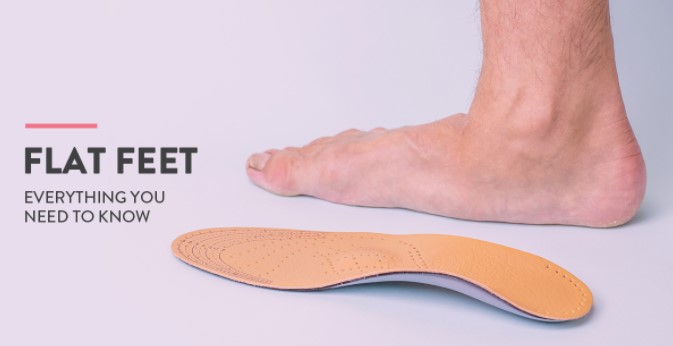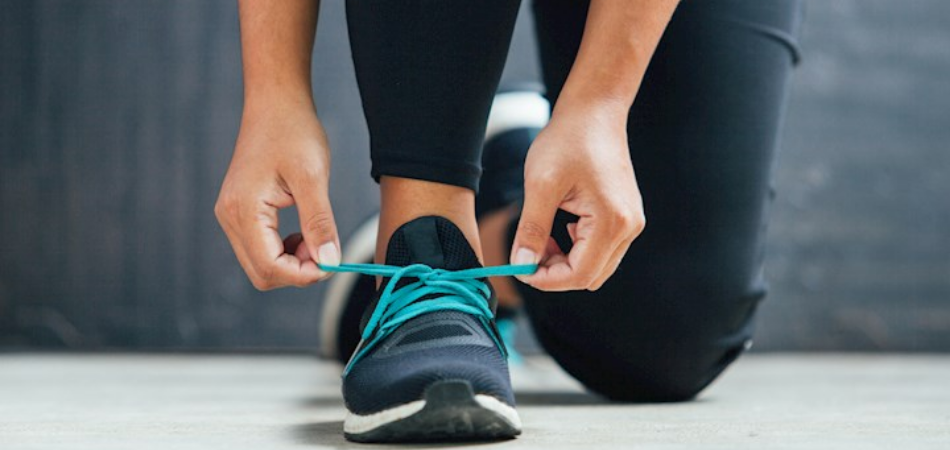Do you know that there are different shoe lacing techniques for different types of feet? Lacing your shoes with the wrong pattern can create pain and discomfort for you. With flat feet, the person will experience foot pain, and the condition can become intense if you’re an athlete.
So, one of the ways of handling issues of flat feet lies in your shoe lacing techniques. First, you must lace your shoes in such a way that your less supported arches will be comfortable. This helps to reduce foot pains as you walk or run.
Through this article, we’ll discuss how to lace running shoes for flat feet. Also, you will discover some of the concerns associated with flat feet.
What Are Flat Feet?
Flat feet are conditions of the feet in which the arches are lower than they normally should. In such a condition, the arches are completely flattened, and the entire soles of the feet will be touching the ground. Most people with flat feet are not even aware of them. But they will always experience foot pain when they run or walk a long distance.
The presence of flat feet can contribute to problems and pains in the knees and ankles. This’s because flat feet tend to change the alignment of the legs, which can make it difficult for the feet to support the legs properly. However, you don’t need to treat flatfeet if you don’t have any pain coming from such a condition.
Causes of Flat feet
Flat feet have different causative factors. Every toddler and infant has a flat foot as their arches still need to develop. As the child grows, the arches will develop to be either high or low. However, there are individuals whose arches never develop. These are the ones that naturally grow with flat feet.
Besides that, some flat feet can be hereditary or caused by some conditions or age. Some of the causes include:
- Cerebral palsy
- Broken bones
- Obesity
- Down syndrome
- Diabetes
- Pregnancy
- Rheumatoid arthritis
- Tendon injuries
- High blood pressure
Symptoms of Flat feet
In most cases, people with flatfeet may not experience any symptom or sign associated with the feet condition. However, some will have foot pain either at the arch region or the heels.
Some of the flatfeet symptoms include
- Toe drift (outward pointing of the toes or front foot)
- Muscle pain
- Leg cramps
- Pain while walking
- Pain at the heel, ankle, or arch
How To Lace Running Shoes For Flat Feet
When it comes to wearing and lacing shoes for flat feet, you can put extra care. That’s why many people often wonder how to lace running shoes for flat feet. The shoe lacing technique should be such that it will provide great comfort and ease of movement for the feet. Furthermore, always select running shoes that are specially designed for flat feet. If you’re an athlete, you can invest in good quality pair of shoes for running on concrete.
Having flat feet demands that you give your arch the necessary support that will help to uphold your entire body. In addition, with flat feet, your arches are less pronounced, and you could get injuries on your foot bone, ligament as well as joints.
The right lacing technique for flat feet should keep the shoe snug at the foot region. This will help in advancing your moving experience.
The steps below are your guide on how to lace running shoes for flat feet.
- Start your lacing from the first eyelets at the bottom and move towards the upside.
- Lace through the inside by crossing over the laces to move outside. So the second eyelets will the laces up through them.
- Move up to the third eyelets without crossing the laces.
- At the fourth eyelets, cross the laces once again.
- Continue the process till your lacing reaches the top.
- It’s proper and recommendable to leave the last eyelets unlaced for more comfort to your feet.
Moreover, you should avoid pulling your laces too tight after lacing them. With flat feet, your feet will seemingly be larger and wider than normal. So tightening the laces will inflict more pain and discomfort as the pressure around your feet and heel will also increase.
Concerns Associated With Flat Feet
Your feet provide the main support for your entire body weight. The support works more when you have developed arches that are strong enough to keep up your feet straight.
But with fallen arches, you’ll discover a shortfall in the support that your feet and legs can offer. Hence there’s the possibility of foot pain. So, individuals with flat feet can experience some other concerns in different aspects of their general health.
Here are some of the concerns associated with flat feet
Plantar Fasciitis
This is the main cause of heel pain resulting from the inflammation of the tendons and muscles connecting the heel bones and the toes. Plantar fasciitis occurs as a stabbing pain mostly in the early hours of the mornings as you wake from sleep. However, the pain may reduce with time as the person moves about.
The stabbing pain from plantar fasciitis is mostly found in running athletes. Also, overweight people and those that use shoes with inappropriate support can have plantar fasciitis. It normally occurs after exercises and not necessarily during the period of exercise.
There are still unclear explanations for the cause of plantar fasciitis in several individuals. However, the major known cause is the continuous stretching or tearing of the plantar fascia, which supports the foot’s arch. Since the plantar fascia has a bowstring shape, great stress will result in tears and collapse of this tendon. Hence, with the irritation and inflammation of the plantar fascia comes to the stabbing pain on the heels.
Some of the conditions that can facilitate the development of plantar fasciitis include
- Overweight – extra weight will increase the stretching and tearing of the plantar fascia.
- Age – as the age of an individual increases from 40 years, the risk for plantar fasciitis also increases.
- Stress exercises – any exercise that puts great pressure and stretching on the plantar fascia creates a higher possibility for muscle pain.
Overpronation
Overpronation is a condition in which the foot’s arch has an excessive inward or outward collapse. This exposes your foot to pain and more injuries as your feet can’t provide the normal support for the body as they strike the ground.
The normal movement of the legs is from side to side during walking, running, jumping, or other exercises. The body’s weight alternates from the heels to the foot and between the two legs through the movement. However, with the inward rolling of the foot towards the arch, there’s an increase in the impact as the foot hits the floor. Hence, the person will become more prone to risk with his movement.
Some of the injuries from overpronation include:
- Heel pain
- Bunions
- Chronic back pain
- Shin splints
- Achilles tendonitis
- Iliotibial band syndrome
Conclusion
Flat feet could cause huge pain and discomfort. These are situations in which the arches of the foot flatten and strike the ground as the person walks, jumps, runs, or makes other movements with legs.
Following our guide on how to lace running shoes for flat feet can provide great comfort and relief from pains associated with flat feet. In addition, good shoe lacing techniques will ensure maximum support for your arch and ankle, making your feet stronger to carry your body weight.




